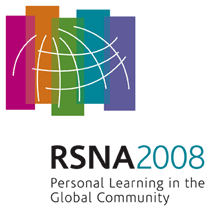
Abstract Archives of the RSNA, 2008
SSK10-03
Serially-sectioned Images of the Cadaver Head
Scientific Papers
Presented on December 3, 2008
Presented as part of SSK10: Informatics (Education)
Dong Sun Shin MS, Presenter: Nothing to Disclose
MinSuk Chung MD, PhD, Abstract Co-Author: Nothing to Disclose
The objective of this research is to present the upgraded serially-sectioned images of a cadaver head, aiming for virtual dissection and operation using 3D images.
A donated Korean male cadaver was selected. He was 67 years old with height of 1,620 mm and weight of 45 kg. He died of cardiorespiratory arrest. He was a known patient of myasthenia gravis. Fixative or dye, which might cause the different color of brain, muscle, and other tissues from a living person, was not injected into the cadaver.
Four hours after death, MRIs of the cadaver head was scanned. After acquiring postmortem MRIs, the cadaver was put into a freezer and frozen to -70℃. The head and thorax blocks were placed in a heavy embedding box. The embedding agent (1,000 ml of water, 30 g of gelatin, and 0.5 g of methylene blue) was poured around the head and thorax blocks to make them tightly fixed to the embedding box. In the preliminary experiment using the thorax block, optimal conditions for photographing were found. We used a Canon EOS 5D™ digital camera with Canon 50 mm micro lens. Resolution and color depth were 4,368 X 2,912 and 48 bit color. Distance from the digital camera to the sectioned surface was adjusted to photograph 436.8 mm X 291.2 mm sectioned surface. As a result, SSIs with 0.1 X 0.1 mm2 pixels could be acquired.
We outlined head structures in 234 SSIs with 1 mm intervals. Sixty-four important structures of head were chosen to be outlined.
A total of 2,500 SSIs of the cadaver's head and neck was obtained. Main results of the serial-sectioning were 2,343 SSIs of head from vertex to chin with 0.1 mm intervals while additional results were 157 SSIs of neck with 0.5 mm intervals.
Two-hundred thirty-four segmented images with 1 mm intervals were prepared. 64 head structures were outlined. The segmented images were satisfactory in quality, which were verified by sagittal and coronal segmented images and 3D images of structures.
The SSIs, segmented images, and 3D images of head, that have been made in this study, will be distributed worldwide. The state-of-the-art images are expected to be greatly helpful in medical teaching and learning as well as useful in clinical practice.
Based on the SSIs and segmented images, atlas, 3D images, virtual dissection software, and virtual surgery software could be created.
Shin, D,
Chung, M,
Serially-sectioned Images of the Cadaver Head. Radiological Society of North America 2008 Scientific Assembly and Annual Meeting, February 18 - February 20, 2008 ,Chicago IL.
http://archive.rsna.org/2008/6011466.html

